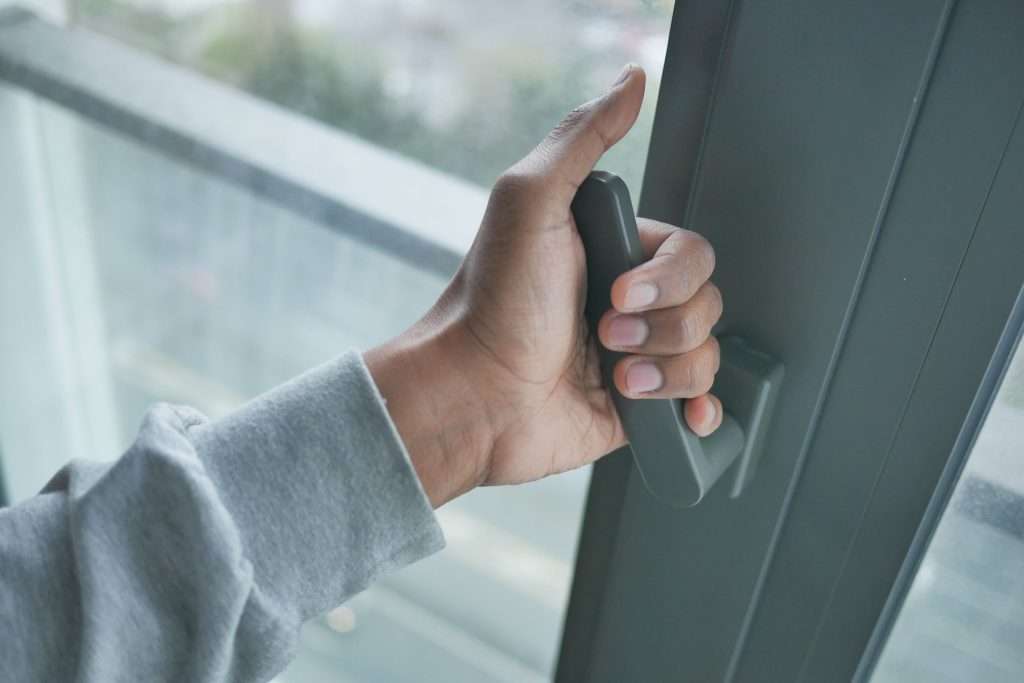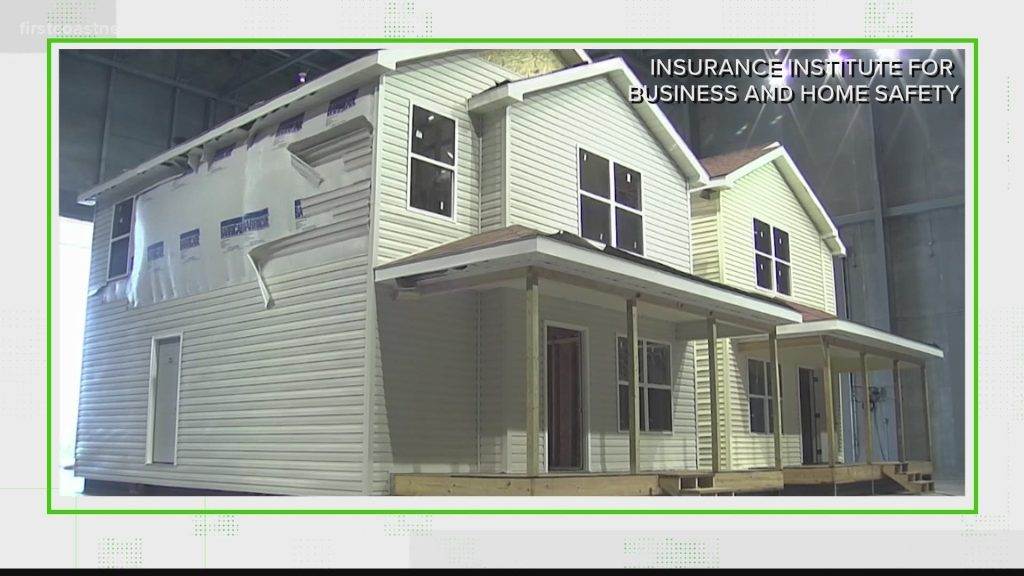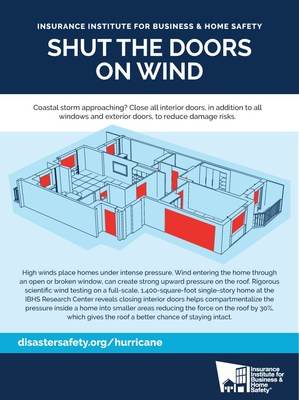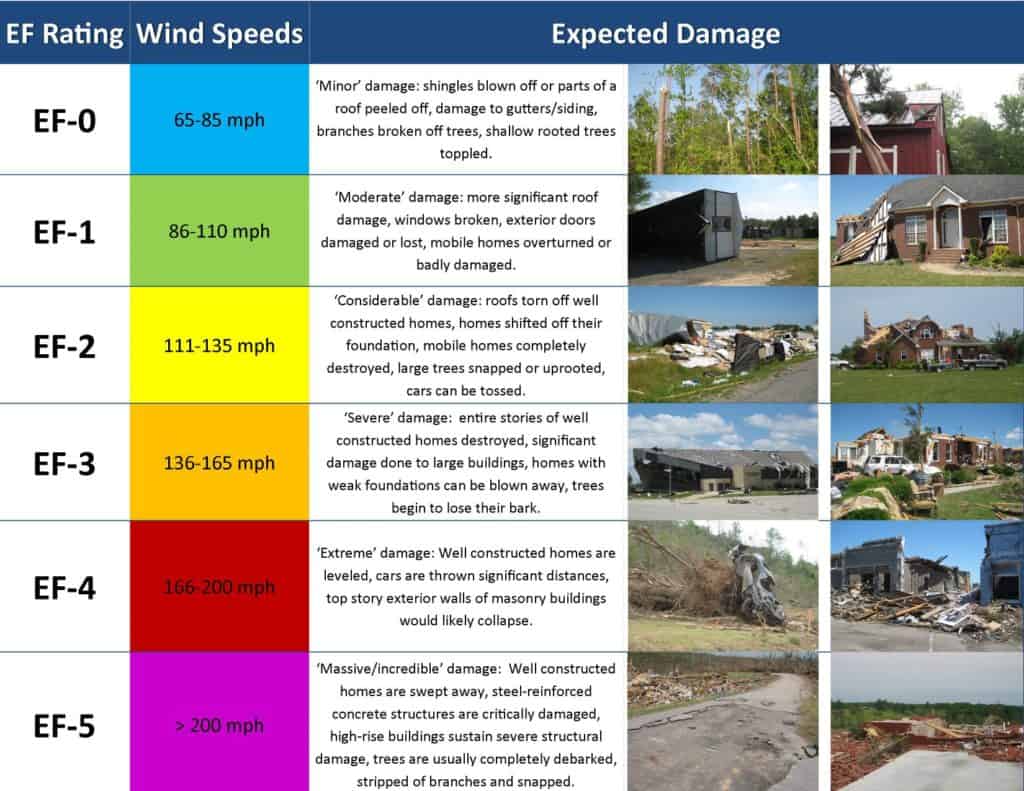We all know that hurricanes bring destructive winds that can wreak havoc on buildings and homes. But have you ever wondered just how much wind hurricane glass can withstand? In this article, we’ll explore the incredible resilience of hurricane glass and uncover the impressive wind speeds it can endure. Whether you live in a hurricane-prone area or simply want to learn more about the engineering marvels that protect our homes, this is an intriguing topic that will leave you in awe. So, let’s buckle up and dive into the fascinating world of hurricane glass and its tenacious battle against the power of the wind.

This image is property of brennancorp.com.
What is hurricane glass?
hurricane glass is a specialized type of glass that is specifically designed to withstand the strong winds and impacts caused by hurricanes and severe storms. It is commonly used in the construction of buildings and structures in hurricane-prone areas to provide protection against flying debris and extreme wind forces.
Definition and composition
Hurricane glass, also known as impact-resistant glass or wind-resistant glass, is typically made up of multiple layers of glass with an interlayer material sandwiched between them. This interlayer material, usually composed of polyvinyl butyral (PVB) or ethylene-vinyl acetate (EVA), acts as a bonding agent, holding the glass layers together even if they are shattered or cracked.
The composition of hurricane glass also plays a significant role in its strength and durability. The glass used is generally tempered or laminated to enhance its impact resistance. Tempered glass is heat-treated to increase its strength, making it less likely to break upon impact. Laminated glass, on the other hand, consists of two or more layers of glass with the interlayer material between them.
Importance of hurricane glass in protecting buildings
The use of hurricane glass in buildings is crucial for protecting both the structural integrity of the building and the safety of its occupants during a hurricane or severe storm. One of the primary functions of hurricane glass is to prevent the penetration of wind and water into the building, reducing the risk of structural damage and flooding.
In addition, hurricane glass provides vital protection against flying debris, which is one of the most significant dangers during hurricanes. The strong winds associated with these storms can turn everyday objects into projectiles that can cause devastating damage to buildings and pose a severe threat to people inside.
By incorporating hurricane glass into the design of buildings, architects and engineers can greatly reduce the risk of damage from windborne debris, protecting the building’s windows and maintaining their structural integrity. This, in turn, helps to minimize the potential for catastrophic failure and ensures the safety of the building’s occupants.
Factors affecting the wind resistance of hurricane glass
The wind resistance of hurricane glass is influenced by several factors that affect its ability to withstand strong winds and impacts. Understanding these factors is essential for selecting the right type of hurricane glass and ensuring its proper installation for maximum protection.
Glass thickness
The thickness of the glass used in hurricane-resistant windows is an essential factor in determining their wind resistance. Thicker glass generally provides greater protection against impacts and can withstand higher wind speeds. However, it is important to note that while thicker glass may offer more resistance to impacts, it may also be heavier and more challenging to install.
Quality of installation
The quality of installation has a significant impact on the wind resistance of hurricane glass. Proper installation techniques, such as ensuring proper alignment and anchoring, are crucial for maximizing the glass’s ability to withstand wind forces. Improper installation can compromise the integrity of the glass and reduce its effectiveness in protecting against windborne debris and excessive wind pressure.
Frame design
The design and quality of the window frame are also critical factors in the wind resistance of hurricane glass. The frame must be sturdy and properly anchored to the building’s structure to provide adequate support for the glass. A robust frame design helps distribute wind forces evenly and prevents the glass from being dislodged or shattered during high winds.
Edge sealant
The edge sealant used in hurricane glass installation plays a vital role in maintaining the integrity of the glass and preventing water and wind infiltration. A high-quality edge sealant that can withstand the effects of weathering and provide a strong bond between the glass layers is crucial for maximizing the wind resistance of hurricane glass.
Interlayer material
The interlayer material between the glass layers in hurricane glass significantly contributes to its strength and impact resistance. PVB and EVA are commonly used interlayer materials that provide excellent bonding and damping properties. These interlayers serve to hold the glass fragments together in the event of breakage, reducing the risk of shattering and enhancing the glass’s ability to withstand impacts and pressure.
Testing standards for hurricane glass
To ensure the reliability and performance of hurricane glass, various testing standards have been established. These standards outline specific criteria and procedures for evaluating the wind resistance and impact resistance of hurricane glass systems.
ASTM E1886
ASTM E1886 is a testing standard developed by the American Society for Testing and Materials (ASTM) that evaluates the performance of exterior windows, curtain walls, and doors subjected to cyclic static pressure differential. This test simulates the wind pressures experienced during hurricanes and assesses the ability of the glass system to resist these pressures without failure.
ASTM E1996
ASTM E1996 is another testing standard developed by ASTM that focuses on the determination of the resistance of exterior windows, curtain walls, doors, and impact protective systems to simulated missile impact. This test evaluates the performance of the glass system when subjected to high-velocity windborne debris, simulating the impacts that can occur during a hurricane or severe storm.
ASCE 7-16
ASCE 7-16, developed by the American Society of Civil Engineers (ASCE), is a standard that provides comprehensive guidelines for determining the minimum design loads for buildings and other structures. This standard includes requirements for wind loads and wind resistance for different categories of buildings in various wind zones, taking into account the specific risks associated with hurricanes and extreme wind events.
These testing standards help ensure that hurricane glass systems meet specific criteria for wind resistance and impact resistance, providing architects, engineers, and building owners with confidence in their ability to withstand severe weather conditions.
Different levels of wind resistance for hurricane glass
The wind resistance of hurricane glass is generally categorized based on the maximum wind speeds it can withstand without failure. Understanding these wind resistance levels is important when designing and choosing hurricane glass systems for different buildings and locations.
Destructive wind speeds and categories
Hurricanes are classified into different categories based on their sustained wind speeds, as defined by the Saffir-Simpson Hurricane Wind Scale. This scale ranges from Category 1 (74-95 mph) to Category 5 (157 mph or higher), with each category representing increasing wind speeds and potential for damage.
Hurricane glass systems are typically designed and tested to withstand wind speeds corresponding to the categories most commonly experienced in a particular area. For example, buildings in coastal regions prone to Category 3 hurricanes would require hurricane glass systems capable of withstanding wind speeds of 111-129 mph.
Requirements for different wind zones
In addition to the hurricane categories, there are specific wind zones defined by building codes that consider factors such as the location and exposure of the building. These wind zones help determine the minimum wind loads and wind resistance requirements for buildings in different areas.
For example, coastal areas with higher exposure to hurricane-force winds may have more stringent wind resistance requirements compared to inland areas. The wind zone classification helps ensure that buildings in high-risk regions are adequately protected by using hurricane glass systems capable of withstanding the specific wind loads associated with those zones.
By considering both the hurricane categories and wind zone classifications, architects and engineers can design and specify hurricane glass systems that provide the appropriate level of protection for buildings in different areas.

This image is property of oceanimpactwindows.com.
Common misconceptions about the wind resistance of hurricane glass
Despite the many benefits and advancements in hurricane glass technology, there are still some common misconceptions about its wind resistance capabilities. Understanding these misconceptions is important for making informed decisions about the use of hurricane glass and managing expectations regarding its performance.
Unbreakable glass
One common misconception about hurricane glass is that it is unbreakable or completely impervious to damage. While hurricane glass is designed to be highly impact resistant, it can still break or crack under extreme forces. The key difference is that when hurricane glass does break, it tends to remain intact due to the interlayer material, minimizing the risk of shattering and reducing the potential for injury or damage.
Resistance to flying debris
Another misconception is that hurricane glass makes buildings completely immune to damage from windborne debris. While hurricane glass can greatly reduce the risk of debris penetration and minimize the potential for damage, it is not invulnerable to all types of projectiles. The resistance of the glass to flying debris is dependent on the size, mass, and velocity of the objects, as well as the specific design and installation of the glass system.
Resistance to extreme wind speeds
Hurricane glass is not designed to withstand extreme wind speeds indefinitely. While it is engineered to resist the wind forces associated with hurricanes and severe storms, there is a limit to the wind speeds it can withstand without failure. Buildings in areas with higher wind speeds may require additional measures, such as reinforced framing or advanced hurricane glass systems, to ensure adequate protection and minimize the risk of damage.
It is essential to have realistic expectations about the wind resistance capabilities of hurricane glass and to consider other factors, such as building design and location, when evaluating the overall safety and protection of a structure in hurricane-prone areas.
Real-life examples of hurricane glass performance
To demonstrate the effectiveness of hurricane glass in protecting buildings, numerous real-life examples exist that showcase the performance of these systems during hurricanes and severe storms.
Case studies of hurricanes
Hurricane Andrew, which struck South Florida in 1992, serves as a compelling case study in the performance of hurricane glass. Buildings equipped with hurricane glass systems demonstrated their ability to withstand the storm’s high winds and flying debris, while neighboring structures without such protection suffered extensive damage.
Similarly, during Hurricane Katrina in 2005, buildings in New Orleans that had incorporated hurricane glass systems fared much better compared to those without. The hurricane glass helped prevent window failures, reducing the entry of wind and water into the buildings and minimizing the risk of structural damage.
Comparison of damaged versus protected structures
Comparing the damage sustained by buildings with and without hurricane glass systems highlights the significant difference in performance between the two. In many cases, buildings that did not have hurricane glass experienced total or partial window failures, resulting in severe damage to the interiors and exposing the structures to further wind and water damage.
On the other hand, structures with hurricane glass systems demonstrated their ability to withstand the impact of windborne debris, maintaining the integrity of the windows and protecting the occupants and contents of the building. This comparison underscores the importance of incorporating hurricane glass into building design for enhanced protection and resilience against hurricanes and severe storms.

This image is property of images.contentstack.io.
Design considerations for hurricane-resistant glass
The design of hurricane-resistant glass systems involves several factors that contribute to their overall effectiveness in withstanding wind pressures and impacts. Consideration of these design aspects is crucial for optimizing the performance of hurricane glass in protecting buildings.
Impact-resistant coatings
Some hurricane glass systems utilize impact-resistant coatings that enhance the glass’s ability to resist impacts and withstand wind pressures. These coatings are typically applied to the outermost layer of the glass and can provide an additional level of protection against flying debris. They help to strengthen the glass, reducing the likelihood of breakage and enhancing the overall wind resistance of the system.
Multiple layers of glass
The use of multiple layers of glass in hurricane-resistant windows provides added strength and impact resistance. With each layer of glass offering an additional barrier to penetration, the chances of the glass being shattered or compromised are significantly reduced. The interlayer material between the glass layers helps maintain the structural integrity and holds the glass fragments together in the event of breakage, further enhancing the system’s overall performance.
Upgraded frame designs
The design and quality of the window frame play a critical role in the wind resistance of hurricane glass systems. Advanced frame designs, such as those incorporating reinforced materials or specific anchoring techniques, can improve the system’s overall strength and ability to withstand high wind pressures. Upgraded frame designs distribute the wind forces more effectively and help prevent the glass from being dislodged or shattered during severe weather events.
Laminated glazing configurations
Different configurations of laminated glazing can provide varying levels of impact resistance and wind resistance. Thicker interlayer materials or additional layers of glass can be incorporated into the laminated glazing configuration to enhance its ability to withstand high winds and impacts. Customized laminated configurations can be tailored to meet specific wind resistance requirements, providing optimal protection for buildings in hurricane-prone areas.
By incorporating these design considerations into the selection and implementation of hurricane-resistant glass systems, architects and engineers can optimize the performance and effectiveness of these systems in protecting buildings against hurricanes and severe storms.
Benefits and limitations of hurricane glass
The use of hurricane glass in building design offers several benefits and advantages, but it also has certain limitations and considerations that should be taken into account.
Enhanced safety for occupants
One of the primary benefits of hurricane glass is the enhanced safety it provides for the occupants of a building. By preventing the penetration of wind, water, and flying debris, hurricane glass helps create a safe and secure environment during hurricanes and severe storms. The reduced risk of window failures and shattered glass minimizes the potential for injuries and the need for costly repairs or replacements.
Improved energy efficiency
Hurricane glass systems can also contribute to improved energy efficiency in buildings. The multiple layers of glass and interlayer materials in these systems provide better insulation against heat transfer, helping to maintain a comfortable indoor temperature and reduce the load on heating and cooling systems. This improved energy efficiency can result in lower energy costs and a more environmentally sustainable building.
Additional costs and maintenance
While hurricane glass offers significant benefits, it is important to consider the additional costs associated with its installation and maintenance. Hurricane glass systems can be more expensive than traditional windows, primarily due to the specialized materials and manufacturing processes involved. In addition, regular inspections and maintenance may be required to ensure the continued effectiveness and longevity of the glass systems.
It is essential for building owners and designers to weigh the benefits and costs of using hurricane glass systems and consider their specific needs, budget, and priorities when making decisions regarding wind protection for their buildings.

This image is property of www.aspwindows.com.
Alternative solutions for wind protection
While hurricane glass is a widely used and effective solution for wind protection, there are also alternative options available that can provide varying levels of protection against hurricanes and severe storms.
Shutters and storm panels
Traditional shutters and storm panels are a common alternative to hurricane glass. These systems consist of removable or permanently attached panels that can be deployed when a storm is approaching. They provide a physical barrier against wind and flying debris, protecting the windows and interiors of buildings. However, the installation and removal of these panels can be time-consuming and labor-intensive, and they may not offer the same level of convenience and uninterrupted visibility as hurricane glass.
Fabric screens and films
Fabric screens and films are another alternative solution for wind protection. These systems are typically lightweight and flexible, allowing them to be quickly deployed over windows and secured in place. They are designed to absorb and disperse the energy of impacts, reducing the risk of window failures. However, fabric screens and films may not provide the same level of impact resistance and durability as hurricane glass, and their effectiveness can vary depending on the specific product and installation method.
Impact-resistant windows
In addition to hurricane glass, impact-resistant windows are another popular choice for wind protection. These windows feature specialized glass or polycarbonate panels that are specifically designed to withstand impacts and high wind pressures. Like hurricane glass, impact-resistant windows provide enhanced safety and protection against windborne debris. However, they may have limitations in terms of design options and customization compared to hurricane glass systems.
When evaluating alternative solutions for wind protection, it is important to consider the specific needs, budget, and design requirements of the project. Each option has its own advantages and limitations, and careful consideration is necessary to select the most suitable solution for a particular building or structure.
Conclusion and final thoughts
Hurricane glass is a critical component in protecting buildings from the destructive forces of hurricanes and severe storms. Its unique composition and design provide enhanced resistance to wind pressures and impacts, minimizing the risk of window failures and structural damage.
Factors such as glass thickness, installation quality, frame design, edge sealant, and interlayer material all contribute to the wind resistance of hurricane glass systems. Testing standards and wind resistance categories help ensure the reliability and performance of these systems in different wind zones and hurricane categories.
While hurricane glass offers numerous benefits, it is important to understand its limitations and consider alternative solutions for wind protection if necessary. Shutters, storm panels, fabric screens, and impact-resistant windows are some alternative options that can provide varying levels of wind protection based on specific needs and priorities.
In conclusion, hurricane glass plays a vital role in safeguarding buildings and occupants against the devastating forces of hurricanes. Its use can greatly enhance the safety, resilience, and energy efficiency of structures in hurricane-prone areas. By considering the factors and design considerations outlined in this article, architects, engineers, and building owners can make informed decisions about the use of hurricane glass systems and effectively protect their buildings from the destructive power of hurricanes.
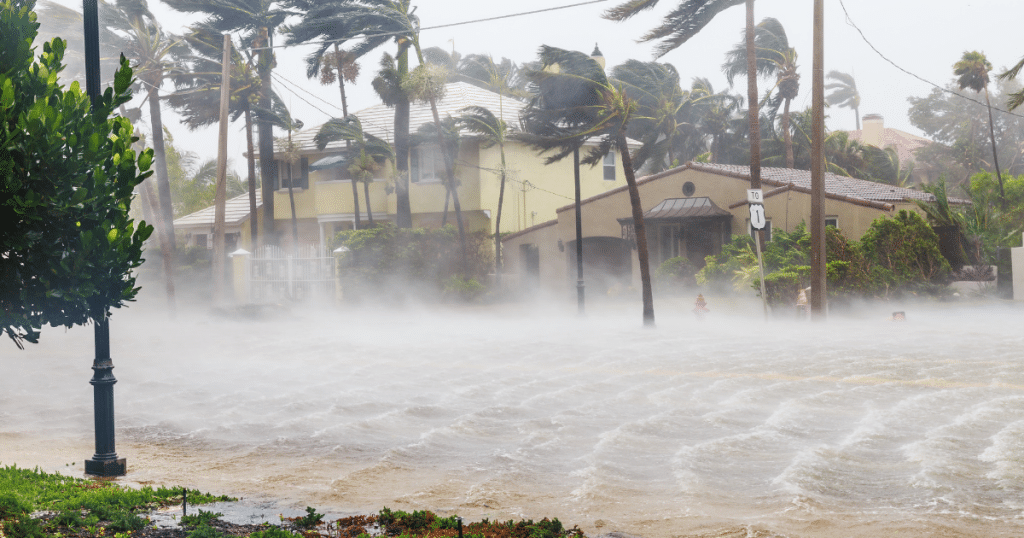
This image is property of www.aspwindows.com.

